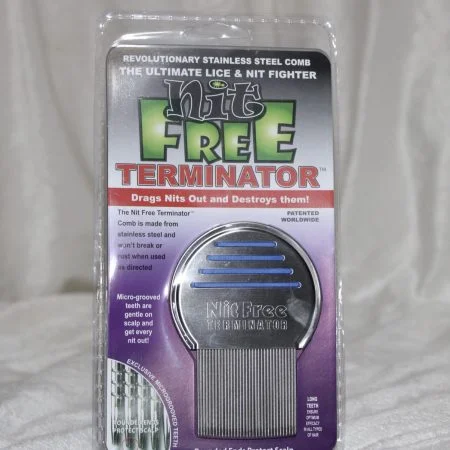What is the Difference Between Head Lice and Dandruff?
If you get a notice from your child’s school about head lice or one of your children’s friends has a case of head lice, many people don’t always know exactly what to look for when checking their child’s head for lice. For example, how do lice eggs differ from dandruff? What is the difference between lice, lice eggs (or nits), and dandruff? Fresh Heads Lice Removal of Jacksonville knows that if you are looking at your child’s head, you might see some white flecks in your child’s hair. They are often very small, so how do you know what you are looking at? How can you tell the difference between whether they are lice eggs (nits), dandruff, live lice insects, or just hair debris?
First, let’s start with head lice. A single louse insect is small and tan to grayish-white to brown, depending on its age. An adult louse is about the size of a sesame seed and has six legs that allow it to move very quickly in a head of hair. Next, the main difference between lice eggs (or nits) and dandruff is that lice eggs are firmly glued to the hair shaft; they are tightly stuck to the hair, and will not slide down the hair shaft under your fingertips. Additionally, nits are typically dark brown in color, especially when they are new and viable, not white as many people believe. Dandruff will either flake off or slide on the hair underneath your fingertips.
Dandruff is a common form of skin eczema, also called Seborrheic dermatitis. It is thought to be caused by an overproduction of oil by the skin, and it is called dandruff when it affects the scalp. Dandruff looks like thick, flaky, skin and it’s usually white to yellowish in color. It can be localized patches or it can be in various parts of the scalp. It also can cause red, irritated skin.
Lice eggs (nits) are dark brown and firmly attached to the hair shaft, and very small. When pried off a hair shaft, a nit will always look like a small oval with a tail coming off the end. They always take the same shape, which helps us to properly identify them. Older eggs or nits that have already hatched will remain glued to the hair shaft even though they are no longer viable. These old nit casings are empty, and may appear to be further down the hair shaft, and can turn a clear color, and sometimes white. They are still difficult to remove, and would not slide underneath your fingertips.
Fresh Heads Lice Removal wants to remind you that nits (lice eggs) can really be very difficult to see. If you are finding small specks that are hard and dark brown in color, and if they will not slide underneath your fingertips, you may have head lice. If this is, in fact, the case, then you will want to seek treatment right away.
On the other hand, dandruff is usually not that hard to see. If you brush on the hair and the flakes easily fall off, then you might try some over-the-counter dandruff shampoos.
Fresh Heads Lice Removal Center advises that one of the best ways to tell if your child has lice eggs or dandruff is to use the fingertip test: If you can slide it under your fingertips, it is not lice. If you must use your fingernails to pry something off of the hair shaft, it is likely lice, and it is time to contact Fresh Heads Lice Removal.
Fresh Heads recommends using a Terminator Comb to properly distinguish head lice from dandruff
-

Nit Free Terminator Comb
$17.99Best selling nit comb on the market. Serrated bands on comb teeth literally pulls nits off hair. It is what all the professionals use!














Leave a Reply
Want to join the discussion?Feel free to contribute!